No, dark energy isn’t an illusion
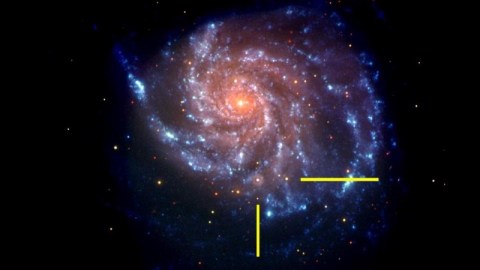
There’s really something new there, even if physicists forget.
“Losing an illusion makes you wiser than finding a truth.” –Ludwig Borne
In 1998, two teams of scientists announced a shocking discovery: the expansion of the Universe was accelerating. Distant galaxies weren’t just receding from us, but their recession speed was increasing over time. Over the next few years, precision measurements of three independent quantities — distant galaxies containing type Ia supernovae, the fluctuation pattern in the cosmic microwave background, and large-scale correlations between galaxies at a variety of distances — all supported and confirmed this picture. The leading explanation? That there’s a new form of energy inherent to space itself: dark energy. The case is so strong that no one reasonably doubts the evidence, but many teams have made alternative cases for the explanation, claiming that dark energy itself could be an illusion.
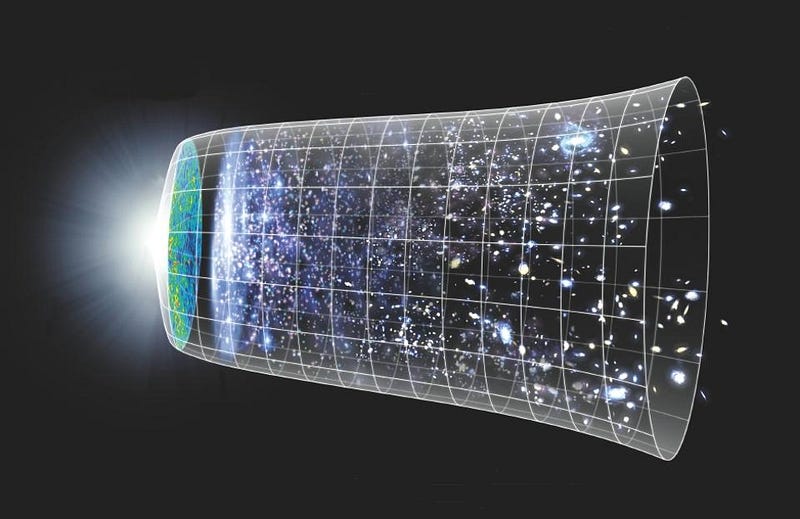
To understand whether this could be the case, we need to walk through four straightforward steps:
- What a Universe without dark energy would look like,
- What our Universe actually looks like,
- What alternative explanations have been offered up,
- And to evaluate whether any of them could legitimately work?
In science, as in all things, it’s pretty easy to offer a “what if…” alternative scenario to the leading idea. But can it stand up to scientific rigor? That’s the crucial test.
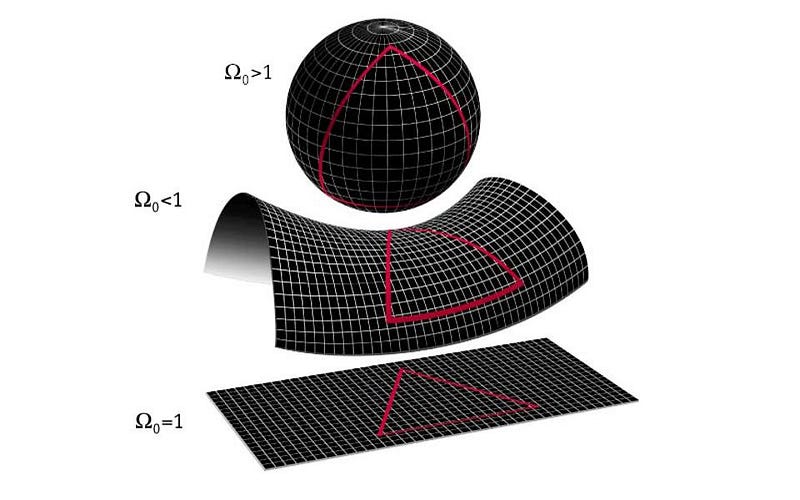
Well before we conceived of dark energy, all the way back in the 1920s and 1930s, scientists derived how the entire Universe could have evolved within General Relativity. If you assumed that space, on the largest scales, was uniform — with the same density and temperature everywhere — there were only three viable scenarios to describe a Universe that was expanding today. If you fill a Universe with matter and radiation, like ours appears to be, gravity will fight the expansion, and the Universe can:
- expand up to a point, reach a maximum size, and then begin contracting, eventually leading to a total recollapse.
- expand and slow down somewhat, but gravitation is insufficient to ever stop or reverse it, and so it will eternally expand into the great cosmic abyss.
- expand, with gravitation and the expansion balancing each other perfectly, so the expansion rate and the recession speed of everything asymptotes to zero, but never reverses.
Those were the three classic fates of the Universe: big crunch, big freeze, or a critical Universe, which was right on the border between the two.
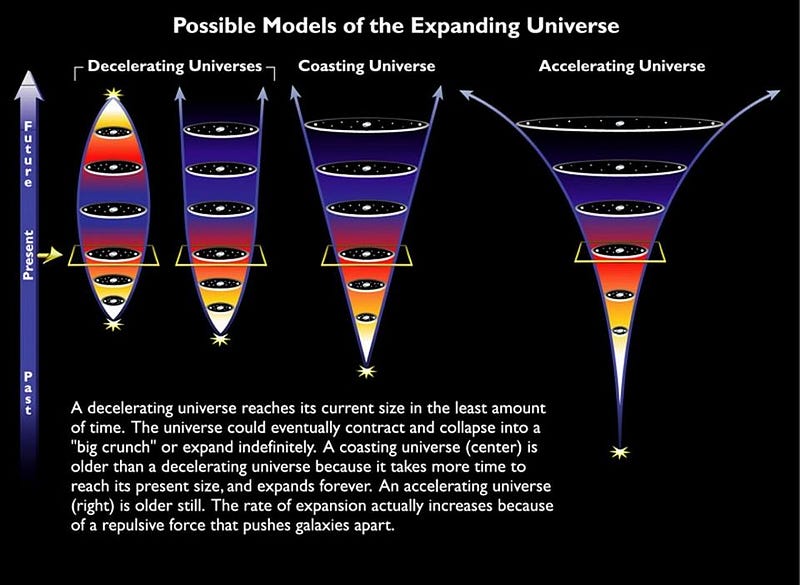
But then the crucial observations came in, and it turns out the Universe did none of those three things. For the first six billion years or so after the Big Bang, it appeared we lived in a critical Universe, with the initial expansion and the effects of gravitational attraction balancing one another almost perfectly. But when the density of the Universe dropped below a certain amount, a surprise emerged: distant galaxies began speeding up, away from us and one another. This cosmic acceleration was unexpected, but robust, and has continued at the same rate ever since, for the past 7.8 billion years.

Why was this happening? The current, known forms of energy in the Universe — particles, radiation and fields — can’t account for it. So scientists hypothesized a new form of energy, dark energy, that could cause the Universe’s expansion to accelerate. There could be a new field that permeates all of space causing it; it could be the zero-point energy of the quantum vacuum; it could be Einstein’s cosmological constant from General Relativity. Current and planned observatories and experiments are looking for possible signatures that would distinguish or search for departures from any of these potential explanations, but so far all are consistent with being the true nature of dark energy.

But alternatives have been proposed as well. Adding a new type of energy to the Universe should be a last resort to explain a new observation, or even a new suite of observations. A lot of people were skeptical of its existence, so scientists began asking the question of what else could be occurring? What could mimic these effects? A number of possibilities immediately emerged:
- Perhaps the distant supernovae weren’t the same as nearby ones, and were inherently fainter?
- Perhaps there was something about the environments in which the supernovae occurred that changed?
- Perhaps the distant light, en-route, was undergoing an interaction that caused it to fail to reach our eyes?
- Perhaps a new type of dust existed, making these distant objects appear systematically fainter?
- Or could it be that the assumption on which these models are founded — that the Universe is, on the largest scales, perfectly uniform — is flawed enough that what appears to be dark energy is simply the “correct” prediction of Einstein’s theory?
The light-blocking, light-losing, or systematic light-differences scenarios have all been ruled out by multiple approaches, as even if supernovae were removed from the equation entirely, the evidence for dark energy would still be overwhelming. With precision measurements of the cosmic microwave background, baryon acoustic oscillations, and the large-scale structures that form and fail-to-form in our Universe, the case that the Universe’s expansion rate is changing in the fashion we’ve measured is beyond reproach.
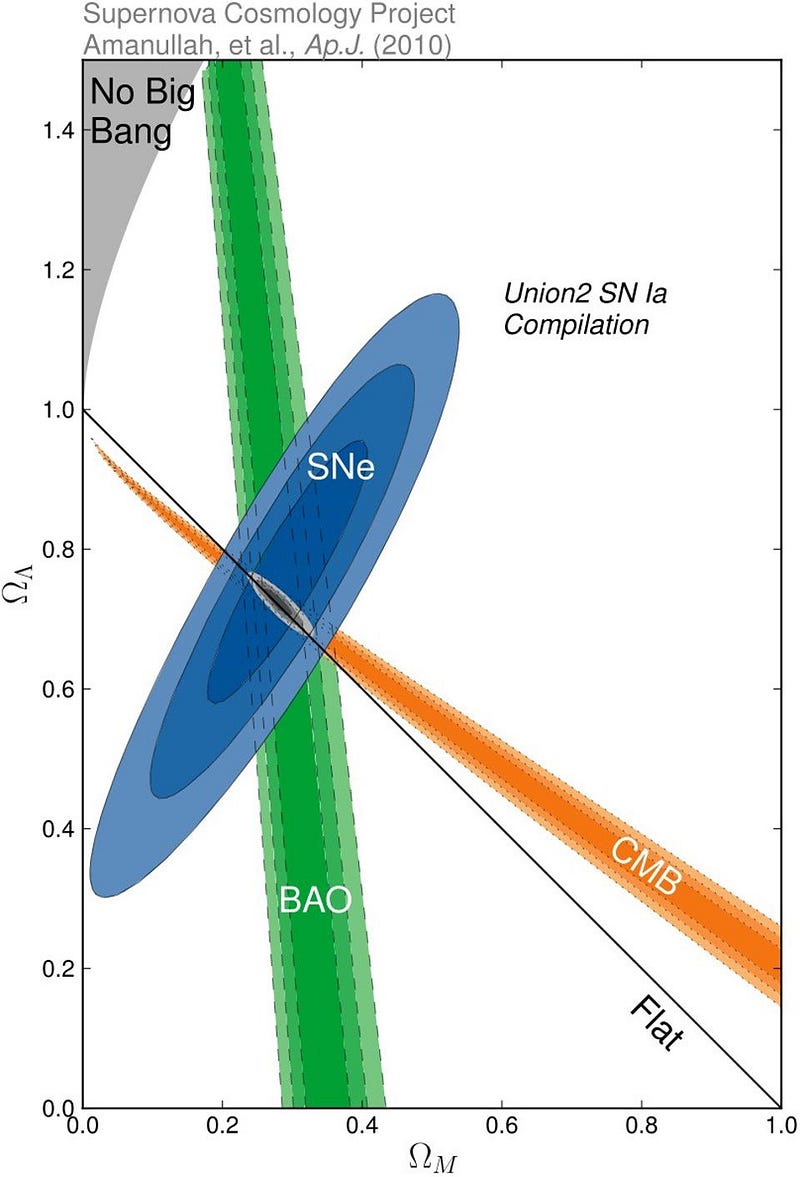
But what about that last possibility? The Universe, after all, isn’t perfectly uniform. It has huge overdense regions: cosmic filaments, giant galaxy clusters, individually bound galaxies, stars, planets, dust clouds, and even black holes, not to mention dark matter. It has underdense regions: cosmic voids that have practically no stars or galaxies inside, stretching for up to tens of millions of light years. And if the Universe is non-uniform — and in particular, if it went from a more uniform state to a more non-uniform state over time — perhaps what we’re seeing as dark energy is a mere misinterpretation of the energy in these imperfections?

That was the idea of a new paper, published just a few weeks ago, by Gábor Rácz and collaborators. Or, more accurately, that’s an old idea that comes up every few years, that gets publicized, and that is still ruled out. Why is it ruled out? Because the effects of these inhomogeneities on cosmic expansion has been quantified, and the results have been known for many years. The big conclusions one can draw are:
- Cosmic imperfections contribute like spatial curvature, which leaves them unable to cause an accelerated-expansion-like effect.
- They contribute less than 0.01% to the expansion rate at all times, even extrapolating billions of years into the future.
- And that gravitational potential energy is the largest contributor from these cosmic imperfections, but play no important role on any scales in the Universe: from singularities to beyond the observable Universe.
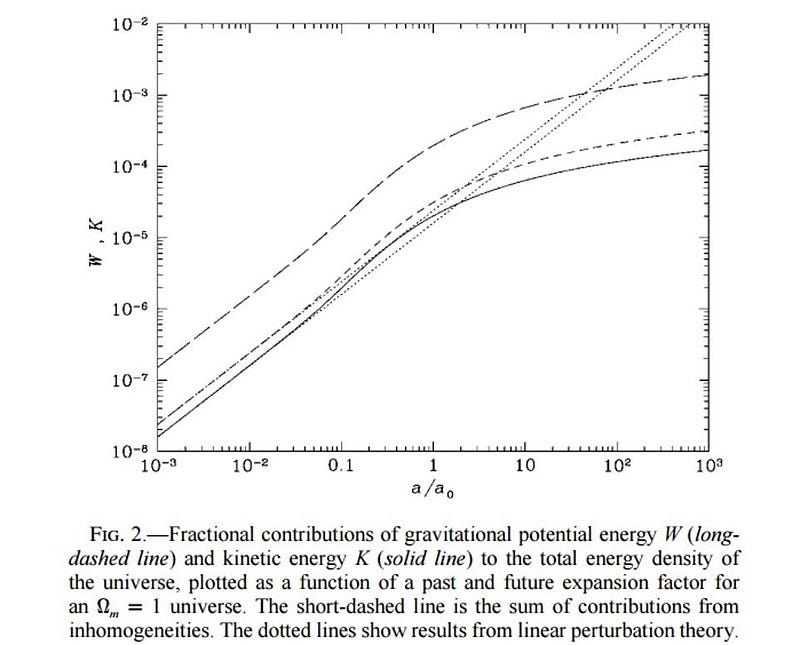
Although I myself wrote one of the important papers that quantified this effect, this result has been known since at least 1995, when Uros Seljak and Lam Hui presented their treatment at a symposium. The Universe is indeed imperfect, but we know exactly how (and by how much) it’s imperfect. It was an interesting idea, but the effects of these imperfections is well-understood, and can’t explain the observed acceleration. Dark energy is here to stay.
If you’re going to resurrect an old idea, you’d better have a new reason why the old objections that ruled it out no longer apply. Until that day comes, you can rest assured that dark energy is no illusion!
Starts With A Bang is based at Forbes, republished on Medium thanks to our Patreon supporters. Order Ethan’s first book, Beyond The Galaxy, and pre-order his next, Treknology: The Science of Star Trek from Tricorders to Warp Drive!





